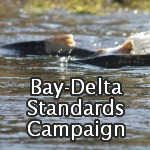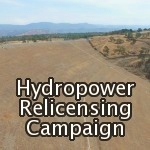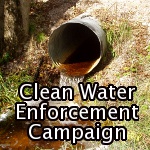In 2005, Ron Stork of Friends of the River warned in a Motion to the Federal Energy Regulatory Commission (FERC) that the “ungated, unarmored spillway” at Oroville Dam needed to be made into a real spillway with real concrete. The term “spillway” is generous. It’s a concrete wall with the top of a huge reservoir on one side and a hillside covered with dirt on the other.
Mr. Stork and his colleagues in the Sierra Club and the South Yuba River Citizens League wrote to the Federal Energy Regulatory Commission:
A single operational use or multiple operational uses (with failure to repair any preceding or cumulative damage) of the ungated spillway could result in a loss of crest control of Oroville Dam. A loss of crest control could not only cause additional damage to project lands and facilities but also cause damages and threaten lives in the protected floodplain downstream. An unarmored spillway is not in conformance with current FERC engineering regulations.
It happened one night. That night was February 12, 2017. Water amounting to 5% of the rated capacity of this “auxiliary” or “emergency” spillway passed over it. The precise scenario Mr. Stork and colleagues described in 2005 appeared imminent. The residents of Oroville, Yuba City, Marysville and other areas along the lower Feather River had to pack up and go with almost no advance warning.
Flashback to 2005. As succinctly described in a February 12, 2017 article in the San Jose Mercury News, Mr. Stork was blown off by the Department of Water Resources, the State Water Contractors and their attorney, the Metropolitan Water District [of southern California] and their attorney, and the Federal Energy Regulatory Commission.
On February 13, 2017, FERC ordered an investigation. Meanwhile, Jeff Kightlinger, general manager of Metropolitan Water District, told the Sacramento Bee he was right the first time. His agency had not been cheaping out in arguing against a real spillway: “‘On that issue, we did not say it was a cost issue,’ Kightlinger said Monday. ‘We said that was an issue that needs to be decided in the appropriate forum.’”
This is supposed to make it okay. To borrow from Franz Kafka, Mr. Stork knocked at the wrong door in the castle. He took his issue to the wrong bureaucracy.
This is life before FERC. The argument is not that something is a bad idea. It’s that it’s someone else’s problem. Many of the FERC license holders and the consultants and attorneys who work for them have this cynical game down to a science: the “best available science” of keeping evidence out of the record. Fighting back takes time and patience and incredible tenacity. And often, it takes more than a decade.
Ron Stork was the undisputed leader of advocacy on the Oroville auxiliary spillway. CSPA was there behind him. In CSPA’s 2006 Motion to Intervene and Comments on the Oroville DEIS, CSPA wrote:
The DEIS takes a minimalist approach to flood control issues, dismissing them as an issue not appropriately addressed in relicensing. This pushes discussion of necessary modifications to the auxiliary spillway on Oroville Dam to a future which will likely only happen in the event of a disaster.
We would rather have been wrong. We would also rather have been listened to and not chased out of the discussion based on process.
Dam owners have a responsibility to the public that goes beyond meeting “regulatory constraints.” Doing the responsible thing is not just for regulators to say. Limiting or reducing constraints is not a win. Today, for the moment, 180,000 people have had their lives turned upside down, and they are fortunate that so far it wasn’t worse. In the best of cases, they will be looking over their shoulders till July.










Pingback: BLOG ROUND-UP, the dam special edition: Why Trump should not fund an Oroville Dam fix; Mother Nature, Oroville Dam, and lessons for California; What the Oroville Dam crisis tells us about natural infrastructure; and more … | MAVEN'S NOTEBOOK |